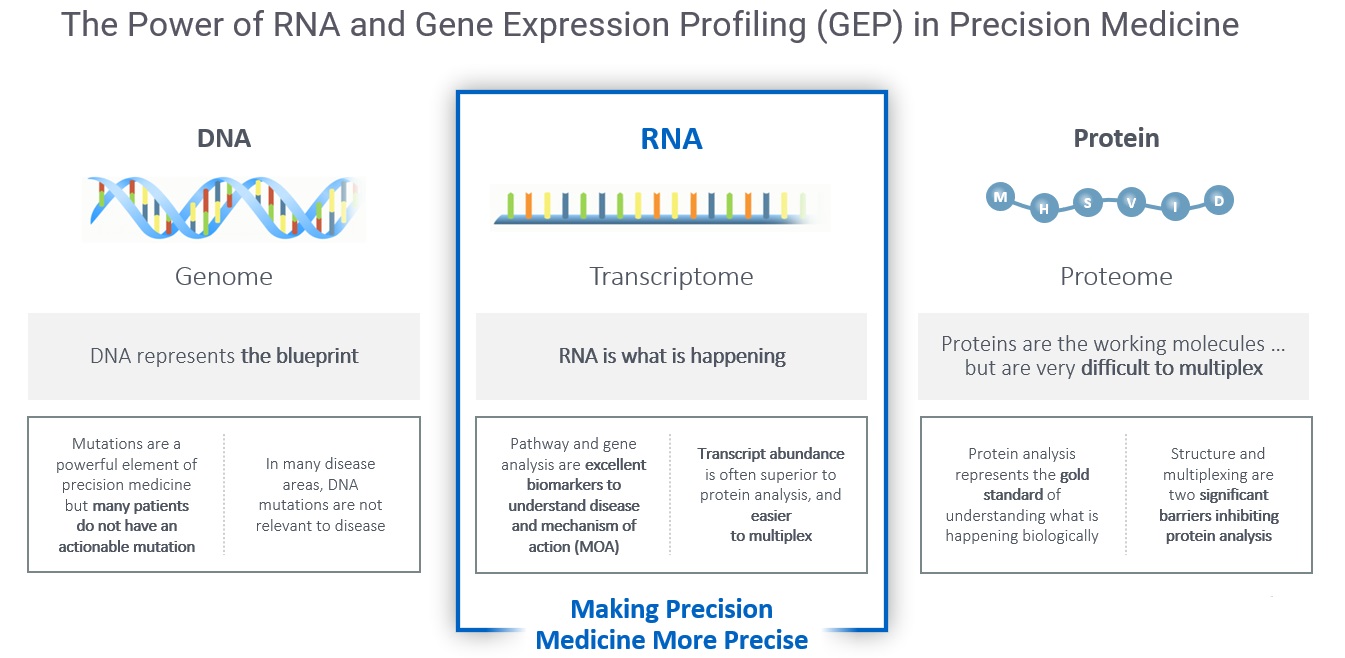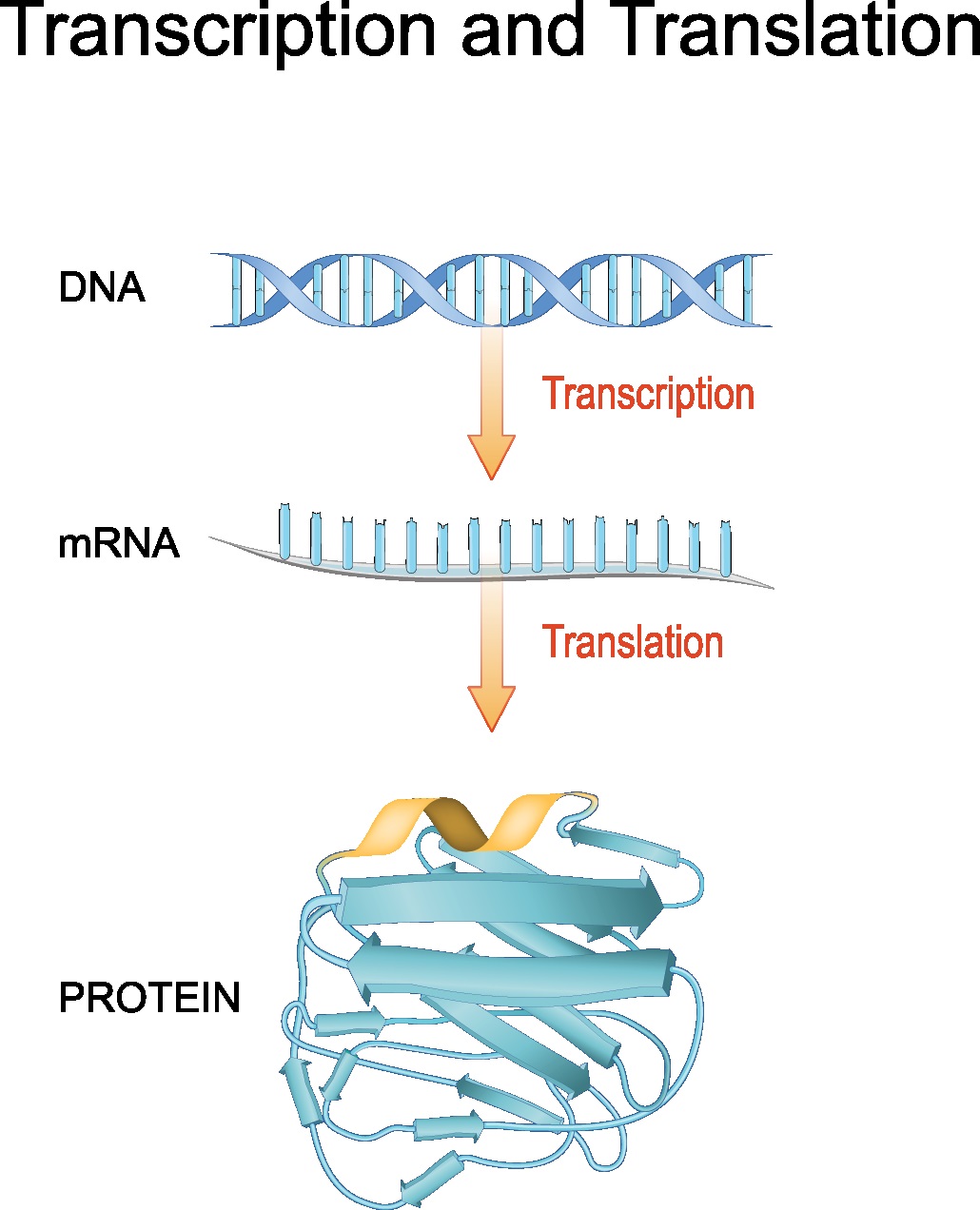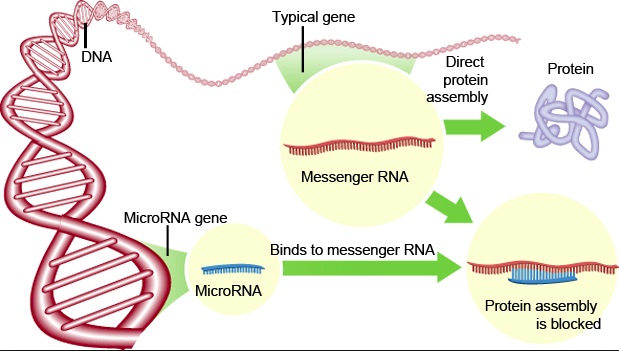RNA Based Gene Expression Profiling
The central dogma of biology describes the process by which information coded in genes is used to create proteins. DNA transcription produces RNA, then RNA translation makes proteins. General information on this process can be found in the article “Introduction to Gene Expression Profiling”
What is RNA?
RNA stands for Ribonucleic Acid and it is a polymer of components joined by phosphodiester bonds. It is a nucleic acid chain similar to DNA but is single-stranded rather than double-stranded, has ribose sugar rather than deoxyribose sugar, and uses uracil instead of thymine as one of the nucleotide bases.
What are different types of RNAs?
There are several different types of RNAs with different structures and functions. These include but are not limited to mRNA, miRNA, rRNA, tRNA, snRNA, snoRNA, lncRNA, and cRNA(aka Ribozymes). They are typically separated into two categories, protein-coding and non-coding. There is a growing interest in research into all of these different types of RNAs as they are all puzzle pieces needed to form a complete picture of epigenetics. Currently, mRNA and miRNA molecules are most commonly used for RNA based GEP.
messenger RNA (mRNA) – is the RNA that carries information from DNA to the ribosomes (site of protein synthesis) in the cell. The mRNA code sequences determine the amino acid sequence in the protein that is produced. These are considered protein-coding RNA molecules and can vary in length.
microRNA (miRNA) – as the name implies, are small RNA molecules consisting of ~22 nucleotides. We continue to learn about the exact roll of miRNAs as they are used by the body to regulate expression of mRNA molecules. These are considered non-coding RNA molecules.
Which types of RNAs are relevant in RNA-based gene expression profiling (GEP)?
RNA based GEP measures the abundance of specific RNA genes in a biological sample. The most relevant and informative RNAs for GEP are mRNAs and miRNAs. As described above miRNAs are short, non-coding RNAs which regulate gene expression of target mRNAs. MiRNA expression profiles in tissues or cell populations are highly informative in revealing cellular states and identifying cellular mechanisms. On the other hand, mRNA expression profiles can measure differential gene expression shedding insight into the effects of disease or medication for example. Measuring multiple omics profiles ( both mRNA and miRNA profiles) from the same sample type opens up the opportunity to decode molecular regulation in development, disease, and drug sensitivity and paves the path for advances in precision medicine.

Recent advances in RNA based GEP technologies allow for ultra-efficient measurement of over 2,000 miRNA and close to 20,000 mRNA profiles from a single tissue section in under 48 hours.

What are RNA based GEP technologies used for?
RNA based GEP technologies are typically used for two purposes: profiling RNA footprints and drug discovery.
RNA based GEP is widely used to provide a unique understanding of what happens to the gene expression levels when a person encounters health struggles such as cancer, cardiovascular, metabolic, neurodegenerative, autoimmune, and so on. By understanding and individual patient’s gene expression profiles, healthcare providers can tailor the treatments to optimize favorable outcomes.
In the area of therapeutics and drug discovery, scientist can use RNA based GEP technologies to understand what happens to the gene expression profile of the cells when they are exposed to a specific drug molecule early on in the discovery process. This allows for pre-screening the drug candidates and making necessary adjustments to the structures to ensure higher chance of success during clinical trials. By de-risking drug development process scientists are able to make more informed and confident decisions about the safety and efficacy of the new drug.
Summary
In conclusion, mRNA and miRNAs are excellent biomarkers for understanding the impacts of diseases or drugs on the human body and to uncover novel mechanisms of actions which can lead to more advanced precision medicine.


